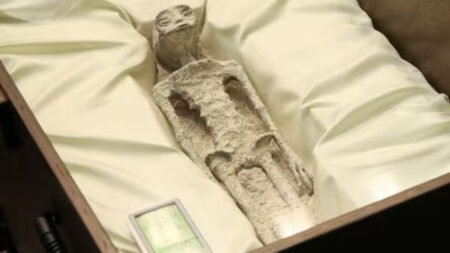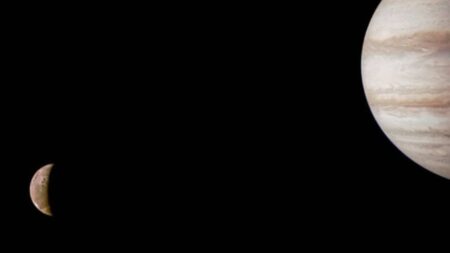NASA’s Webb Telescope has captured star birth and cosmic cliffs recently. This is a breakthrough for the astronomic community. It will provide much sought after information on the formation of galaxies. This will help in finding the missing pieces of the jigsaw puzzle about formation of the universe.
In a white house event, President Joe Biden unveiled the first image of the galaxy cluster SMACS 0723. It is also known as the “Webb’s First Deep Field.” During a live broadcast on July 12, NASA had uploaded the colour photos and data, also called as spectra.
The photo was even featured in the famous Times Square. Google had also launched a special doodle to commemorate the special occasion. NASA has hailed the images as a milestone for the future, as reported by Reuters.
The telescope’s first deep field is the galaxy cluster SMACW0723. The region is teeming with many new born galaxies and myriads of intriguing structures ever captured in the infrared light.
This is the oldest image of the universe that we can put our hands into. It will also shed light into the formation of the universe and galaxy formation.
The galaxy cluster can be viewed near the constellation Volans at night in the southern sky.
More About NASA’s Webb Telescope:
The James Webb Telescope conducts deep research in the field of infrared astronomy. It is a also space telescope. It has been manufactured by Northrop Grumman Ball Aerospace group. James Webb telescope construction was completed in 2016 at a cost of US$ 10 billion.
It has 18 hexagonal mirror segments and is made up of gold-plated beryllium. The telescope has a diameter of about 21 feet and is much larger than the previous Hubble’s 8 feet diameter. The mass of the James Webb telescope is also half of that of the Hubble telescope.
It also observes low frequency light from long wavelength light to mid range infrared light. It was launched finally on Christmas in 2021. The telescope is the world’s quintessential space science observatory because it is in service to unravel the mysteries of the universe. Its expected life is around 20 years. It is a venture of European, US and Canadian space agencies but NASA has taken the lead.
NASA’s headquarters at Goddard Space Flight Centre in Maryland oversees the venture.
Why is the image covered by NASA’s Telescope Impactful?
The image covers a speck of the sky comparable to a grain of sand. The star emitted the captured light around 4.6 billion years ago. Because of this reason by seeing it, we are peeping into billions of years of history. We are viewing the youngest galaxies in the field. It demystifies the mystery of thousands of galaxies.
Faintest objects that were never seen before were also observed. Observations of finer details like the vast cloud of gas surrounding a dying star were made. Water, haze and cloud were observed in an exoplanet called WASP – 96 b which revolves around a Sun-like star. One of the four images is an enormous mosaic of Stephen’s Quintet.
Apart from the pictures, observations of physical and chemical origins will shed more light. The images will be deciphered by cosmologists, aerospace engineers and radio-scientists in detail.
In the future NASA’s Webb telescope will be working on the cycles of stars, moons of the outer solar system and the atmosphere of exoplanets.
The images have been termed as a “stellar nursery” and a “cosmic dance.” The portion of the wavelength it captures was not accessible by its previous predecessors. It is often termed as a successor of Hubble that will revolutionise the study of astronomy in the years to come.













